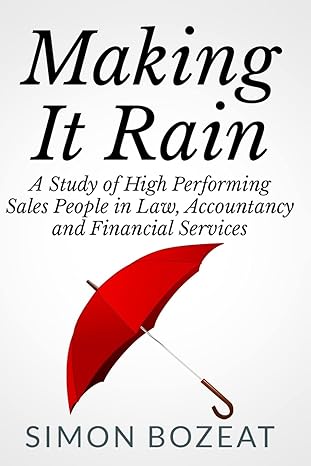Answered step by step
Verified Expert Solution
Question
1 Approved Answer
Blue Ridge Marketing Inc. manufactures two products, A and B. Presently, the company uses a single plantwide factory overhead rate for allocating overhead to products.
Blue Ridge Marketing Inc. manufactures two products, A and B. Presently, the company uses a single plantwide factory overhead rate for allocating overhead to products. However, management is considering moving to a multiple department rate system for allocating overhead. The following table presents information about estimated overhead and direct labor hours. Direct Overhead Labor Hours (dlh) Product A Product B Painting Dept. Finishing Dept. $248,000 10,000 dlh 16 dlh 4 dlh 72,000 10,000 4 16 Totals $320,000 20,000 dlh 20 dlh 20 dlh The overhead from both production departments allocated to each unit of Product B if Blue Ridge Marketing Inc. uses the multiple production department factory overhead rate method is a. $214.40 per unit b. $115.20 per unit c. $320.00 per unit d. $425.60 per unit Aleutian Company produces two products: Rings and Dings. They are manufactured in two departments: Fabrication and Assembly. Data for the products and departments are listed below. Product Number of Units Direct Labor Hours Machine Hours per Unit per Unit Rings 1,000 4 Dings 2,000 3 6 9 All of the machine hours take place in the Fabrication Department, which has estimated total factory overhead of $90,000. All of the labor hours take place in the Assembly Department, which has estimated total factory overhead of $105,000. Aleutian Company uses the multiple production department factory overhead rate method. The Fabrication Department uses machine hours as an allocation base, and the Assembly Department uses direct labor hours. The total factory overhead allocated per unit of Dings is a. $23.25 b. $56.75 c. $65.25 Od. $64.50 Total Activity-Base Usage 9,100 Given the following information, determine the activity rate (rounded to the nearest cent) for setups. Activity Setups Budgeted Activity Cost $50,900 Inspections 25,100 $128,100 Assembly (dih) 78,100 $400,100 a. $5.12 b. $5.16 c. $5.59 Od. $5.10 Kaumajet Factory produces two products: table lamps and desk lamps. It has two separate departments: Fabrication and Assembly. The factory overhead budget for the Fabrication Department is $618,840, using 382,000 direct labor hours. The factory overhead budget for the Assembly Department is $464,784, using 55,200 direct labor hours. If a desk lamp requires 4 hour of fabrication and 7 hours of assembly, the total amount of factory overhead that Kaumajet Factory will allocate to desk lamps using the multiple production department factory overhead rate method with an allocation base of direct labor hours if 11,400 units are produced is a. $223,776 b. $95,988 c. $310,811 Od. $745,788 Ramapo Company produces two products, Blinks and Dinks. They are manufactured in two departments, Fabrication and Assembly. Data for the products and departments are as follows: Product Blinks Number of Direct Labor Hours Machine Hours Units 1,000 Per Unit 4 Per Unit 5 Dinks 2,000 2 8 All of the machine hours take place in the Fabrication Department, which has an estimated overhead of $84,000. All of the labor hours take place in the Assembly Department, which has an estimated total overhead of $72,000. Ramapo Company uses a single plantwide overhead rate (rounded to the nearest cent) to apply all factory overhead costs based on direct labor hours. The factory overhead allocated per unit of Dinks is Oa. $77.00 Ob. $39.00 Oc. $19.50 Od. $59.92 Blue Ridge Marketing Inc. manufactures two products, A and B. Presently, the company uses a single plantwide factory overhead rate for allocating overhead to products. However, management is considering moving to a multiple department rate system for allocating overhead. The following table presents information about estimated overhead and direct labor hours. Overhead Direct Labor Hours (dih) Product A Product B Painting Dept. Finishing Dept. $407,550 62,874 11,000 dlh 13 dlh 7 dlh 6,300 7 16 Totals $470,424 17,300 dlh 20 dlh 23 dlh The overhead from both production departments allocated to each unit of Product B if Blue Ridge Marketing Inc. uses the multiple production department factory overhead rate method is a. $9.98 per unit b. $419.03 per unit c. $551.51 per unit d. $37.05 per unit Blue Ridge Marketing Inc. manufactures two products, A and B. Presently, the company uses a single plantwide factory overhead rate for allocating overhead to products. However, management is considering moving to a multiple department rate system for allocating overhead. The following table presents information about estimated overhead and direct labor hours. Overhead Direct Labor Hours (dih) Product A Product B Painting Dept. $248,000 10,000 dlh 16 dlh 4 dlh Finishing Dept. 72,000 10,000 4 16 Totals $320,000 20,000 dlh 20 dlh 20 dlh Using a single plantwide rate, the factory overhead allocated per unit of Product B is a. $496 Ob. $320 Oc. $640 Od. $144 Ramapo Company produces two products, Blinks and Dinks. They are manufactured in two departments, Fabrication and Assembly. Data for the products and departments are as follows: Number of Direct Labor Hours Machine Hours Product Blinks Dinks Units 1,135 2,281 Per Unit 3 Per Unit 7 8 All of the machine hours take place in the Fabrication department, which has an estimated overhead of $81,200. All of the labor hours take place in the Assembly department, which has an estimated total overhead of $103,500. Ramapo Company uses a single plantwide overhead rate (rounded to the nearest cent) to apply all factory overhead costs based on direct labor hours. The factory overhead allocated per unit of Dinks is a. $47.17 b. $23.40 c. $310.52 Od. $58.96
Step by Step Solution
There are 3 Steps involved in it
Step: 1

Get Instant Access to Expert-Tailored Solutions
See step-by-step solutions with expert insights and AI powered tools for academic success
Step: 2

Step: 3

Ace Your Homework with AI
Get the answers you need in no time with our AI-driven, step-by-step assistance
Get Started


